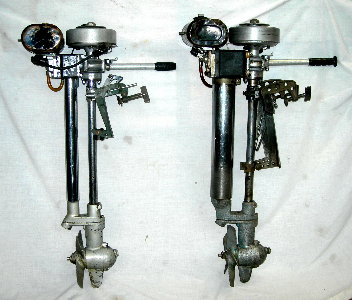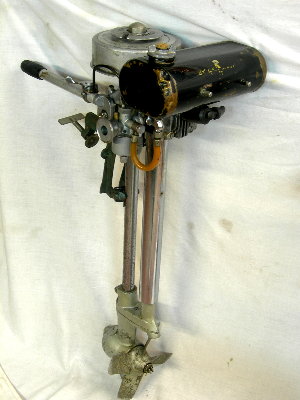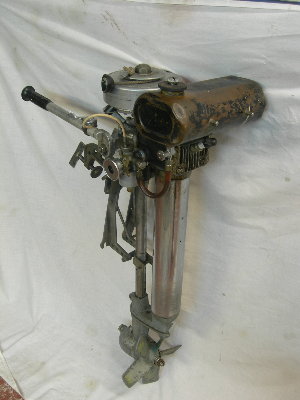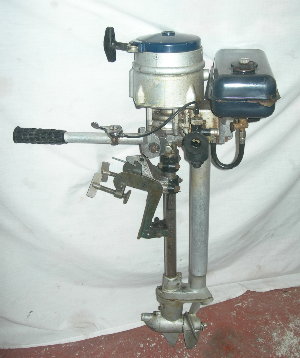
|
British Seagull The original importer of British Seagulls to the USA (in the 1950's) was the Boat Locker in the town next to ours. By the time I was a kid in the 1970's there were zillions of them around here. They were very popular with sailors and the yachting crowd since they were billed as being powerful, simple and built of quality materials - sort of the Range Rover of outboards. (ha ha!) The truth is they were simple, too simple for their own good. While other outboards incorporated recoil starters in the 1930's, Seagulls required wrapping a stubby starter cord around their flywheel until their final versions in the 1980's. And the starter rope got a lot of use since the brass ignition system would corrode in very short order.... In the 1930's OMC settled on alternate firing twins for all outboards over 2.5hp since they are inherently smoother than singles - Seagull did offer an opposed twin in the 30's but regressed to only paint-shaker singles from the 50's on. Another Seagull shortcoming was the lack of 360 reverse, though some very expensive top end models did have an ugly neutral shift or full FNR gear shift mechanism. Lack of a co-pilot feature and a lot of flywheel and prop torque required that one keep a hand on the tiller at all times. And while the brass and chrome looked nice in the showroom, they did not hold up well over time. To be honest, another probable factor with Seagull's poor track record could be the type of chap who purchased them - sailors and "yachtsmen" who may not be the best at caring for mechanical devices. They were also popular with the contrary sort who clamed to like the simple design - the same type of person who drove Peugeots, Renaults or Rover cars... nuff said! (they probably are driving Range Rovers today...) For years I would dredge Seagulls up off the harbour bottom after unhappy owners had pitched them off the stern of their sailboat, being fed up after 300+ pulls trying to start them. Most could be made to run again but I can't say I am a true fan. If you are interested in British Seagulls there is a fantastic website in the United Kingdom that I thoroughly recommend called Saving Old Seagulls. The information on SOS is second to none and the people on the info boards are very kind and knowledgeable. Today I have a Forty Plus in pretty good shape with most of the paint intact and the British Seagull decal legible. Also pictured below is a Century that is a bit worse-for-wear, missing a lot of paint and has quite a few nicks & dings and corrosion. (It can still push the Queen Mary though!)
I was given this "new" Seagull by a family friend. It is a 1-2hp 1984 EFS Forty Featherweight model complete with recoil starter! Frankly, without the chrome exhaust, brass gas tank and signature Seagull propeller (this one is shockingly modern!) I feel the motor has lost a lot of its charm. Also, it does not appear to be holding up as well as the earlier models and shows significant corrosion despite a very easy life. (Mostly reposing in the basement)
If you are interested in outboards from the UK be sure to check out the Atco Boatimpeller page! Atco Boatimpeller | Bendix | British Seagull | Caille | Champion | Chris Craft | Dragon Fly | Elgin | Elto | Evinrude | Flambeau | Johnson | Lauson | Lockwood Ash | Mac10 Wankel | Martin | Mercury | Misc.Motors | Oliver | Outboard Jet 200 | Pluvier | Scott-Atwater | Tohatsu | Tomos | Volvo | West Bend | Whirlwind(Soviet) | Wizard| Yamaha | Zundapp |




